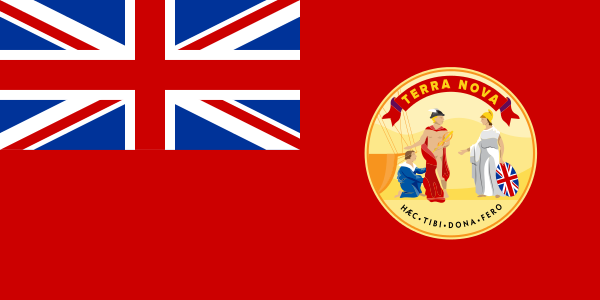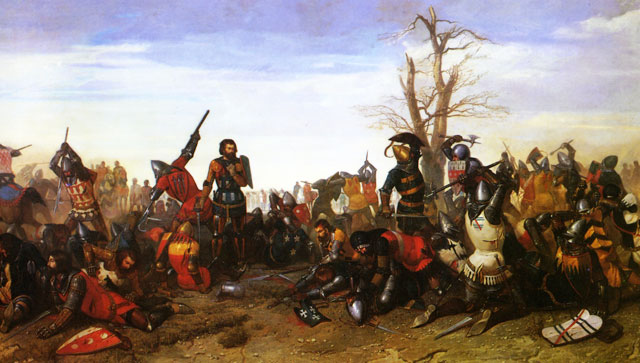
Sebastian Philip Bierk (born April 3, 1968), known professionally as Sebastian Bach, is a Canadian heavy metal singer who achieved mainstream success as frontman of Skid Row from 1987 to 1996. Since his departure from Skid Row, he has had many television roles, acted in Broadway plays, and leads a successful solo career.
Career
Kid Wikkid (1983–1985)
The members of Kid Wikkid were stationed in Peterborough. Upon hearing of the band and unaware of their ages, 14 year old Bach auditioned for the group, and was successfully hired. Kid Wikkid moved back to Toronto, and Bach’s dad eventually allowed Bach to move in with his Aunt Leslie. The event was recorded twice in the Peterborough newspaper.
Skid Row (1987–1996)
Skid Row initially formed in the late eighties with lead singer Matt Fallon. They began playing at various New Jersey clubs. Fallon would soon leave the band in 1987, leaving Skid Row without a singer. Bach was spotted singing at rock photographer Mark Weiss’s wedding at the age of 18 and the members asked him to join in early 1987. He sent them a demo of him singing “Saved By Love.” They loved it and flew him to New Jersey where they began playing gigs. Sebastian also recorded demos with Bon Jovi & Sabo’s friend Jack Ponti. (The song “She’s on Top” later came out on Jack Ponti Presents Vol. 1)
In 1991, Bach was criticized for performing wearing a T-shirt reading “AIDS Kills Fags Dead.” Later he claimed he wore it without reading it first; it had been thrown to him by a fan. Although he made light of the incident in his original apology (stating that he would’ve been offended by someone mocking his grandmother’s then-recent death with a “Cancer Kills Grandmas Dead” shirt), Bach has since repeatedly apologized for and disavowed the statement, “That was really stupid and wrong for me to wear that for one half-hour in my life. What nobody brings up is in 2000, when I was in Jekyll & Hyde, and at an auction for Broadway Cares, I donated $12,000 of my own money to fight AIDS.”
In 1990, Bach performed with Guns N’ Roses and Metallica, on the same stage, at a party held by RIP Magazine, the improvised name for the band was: The Gak. In 1992, he sang the Canadian National Anthem at the Major League Baseball All-Star Game in San Diego, California.
Bach was eventually fired when he booked a show where Skid Row would have opened for KISS in 1996. Other band members told Bach that Skid Row was too big to be an opening act and that they were not going to do the show. Bach then left a message on a bandmate’s answering machine telling him that you are never too big to open up for KISS, and subsequently left the band. Ironically enough, four years later, Skid Row was one of the opening acts for the 2000 Kiss Farewell Tour, without Bach.
Broadway and other projects (1996–2006)
In 1996, Bach formed a rock band called The Last Hard Men, with Frogs guitarist Jimmy Flemion, The Breeders lead guitarist Kelley Deal, and Smashing Pumpkins drummer Jimmy Chamberlin. The group recorded a full-length, self-titled album for Atlantic Records, who then opted not to release it. In 1998 it was released on Kelley Deal’s label, Nice Records, with no fanfare and a very limited pressing of 1000 CDs. This run may have been sold via mail order only. The album has since been re-released and can be purchased commercially.
In 1999 Bach released his debut solo album Bring ‘Em Bach Alive!, his first release after his departure from Skid Row. The album was mainly a live album composed of Skid Row songs of Bach’s era; however it also included five new original solo tracks (studio recordings).
In 2000, Bach began performing in Broadway productions. He made his Broadway debut with the title role in Jekyll & Hyde in April 2000. Although originally only contracted through early September, Bach received good reviews and was asked to extend until October 15. Replacing him was David Hasselhoff, whom Bach mentored slightly during rehearsals. He also appeared as Riff Raff in The Rocky Horror Show in 2001. On November 28, 2001 Bach appeared at New York Steel, a benefit concert held in response to 9/11. He appeared early in the show, left to perform on Broadway, and returned at the end when all performers gathered for a final song.
In early 2002, he became the host of VH1’s Forever Wild. In October that same year, Bach was signed to perform in the national touring production of Jesus Christ Superstar, playing the title role alongside JCS veteran Carl Anderson (who reprised his familiar role from Broadway and film of Judas Iscariot). He has said if he ever did the show again, he would like to try the role of Judas next time. A DVD video of live performances called Forever Wild was released in June 2004. That same year, he reprised the title role(s) in another showing of Jekyll and Hyde.
Sometime in 2003, Bach tried out for Velvet Revolver before the band found Scott Weiland, but was turned down because, according to Slash, “We sounded like Skid Roses!” From 2003 to 2007, Bach had a recurring role on the WB television show Gilmore Girls as “Gil”, the lead guitarist in Lane Kim’s band, Hep Alien. Members of Bach Tight Five (a project initiated by Bach in 2004, but shortly dissolved thereafter) lived with Bach and his family as documented on VH1’s I Married …Sebastian Bach, one of the “I Married …” series. Stars also included Dee Snider, of the rock band Twisted Sister.
In 2005, Bach cooperated with Henning Pauly to be the singer on the Frameshift album called An Absence of Empathy, which was released in April 2005. He was recommended to Henning by Dream Theater’s James LaBrie whom Bach is very close friends with.
On May 12 and May 14, 2006 at the Guns N’ Roses’ warmup show at the Hammerstein Ballroom in New York City, Bach joined Axl Rose on stage for the song “My Michelle”….. He joined Rose and gang for a third time the following night (May 15) to sing “My Michelle” once again. He also joined them for their Pre-Download Festival show in the Apollo Hammersmith, London, singing My Michelle. Rose introduced Bach by saying that the two had rekindled their friendship in the previous week after 13 years of not speaking. On June 4, 9 & 11 he again joined Rose on stage at the 2006 Gods of Metal Festival (Milan), Download Festival in RDS Dublin and in Donington, respectively. He also appeared on several other tour dates during GN’R’s European tour. On September 23, 2006, he joined Axl on stage once again at KROQ-FM’s Inland Invasion festival in California for a rendition of “My Michelle”. On July 30, 2006, Bach filled in for an ailing Axl Rose for “Nightrain” and the encore “Paradise City”.
SuperGroup and Angel Down (2006–2010)
Bach starred with Ted Nugent, Evan Seinfeld, Jason Bonham and Scott Ian on the VH1 show Supergroup in May 2006. The musicians formed a band called Damnocracy for the reality show, during which they lived in a mansion in Las Vegas for twelve days and created music.
Bach announced a partnership record label with EMI to jointly create a label owned by Bach, including his album Angel Down, which was released on November 20, 2007. Bach also recorded backing vocals for the track “Sorry” on Guns N’ Roses’ long-delayed Chinese Democracy, which was released on November 23, 2008. He spent the summer of 2008 playing with Poison and Dokken. He also did a solo Australian tour in May & has been working on new songs with Jamey Jasta from HATEBREED, for the follow-up to his Angel Down CD.
Sebastian Bach was the winner of the second season of the CMT reality show, Gone Country.”
Kicking & Screaming and Sterling’s departure (2010–2012)
Bach toured as an opening act for GNR’s “Chinese Democracy Tour” 2009–2010, and performed “My Michelle” with Axl Rose in Quebec City on February 1, 2010. On January 5, 2011, he was featured on NBC’s Jimmy Fallon Show in a live performance and a subsequent video of “We Are The Ducks”, a power ballad written for University of Oregon Ducks, set to play in the BCS national championship game Monday, January 10, 2011.
In spring 2011, Bach was interviewed by British metal band Asking Alexandria in the March/April issue of Revolver. The band are fans of Skid Row and covered two of their songs the preceding year of the interview. Bach also filmed in their music video “Closure”.
Sebastian has also provided the voice of Prince Triton, King Neptune’s rebellious son, in SpongeBob SquarePants in the episode, SpongeBob and the Clash of Triton, which premiered in early July 2010. In June 15, 2011, Sebastian revealed the title of his solo album would be Kicking & Screaming. In July 8, 2011 track list, cover art and title of the first single were revealed. It was released September 27, 2011 for North America and worldwide and September 23, 2011 for Europe on Frontiers Records.
On August 13, 2012, Nick Sterling was fired by Bach after refusing to sign an agreement to appear on an undisclosed TV show. Nick also broke rules set by Bach with regards to drinking before shows. Bach also stated in a radio interview that Nick is not allowed in Canada due to an alcohol-related incident. “Nick got into some legal trouble, having to do with alcohol, down in Arizona. Where he lives.” He was replaced later by Jeff George.
Recent events (2013–present)
On April 30, 2013, Bach confirmed via Twitter that a new studio album was in the works. He went on to say that Bob Marlette would be returning as producer. Bach had collaboration work for the upcoming album with John 5, Duff McKagan, and Steve Stevens. On January 13, 2014 the solo album entitled Give ‘Em Hell was announced with prospective release date of April 22, 2014. Electronic music producers Dada Life have announced Sebastian Bach as the vocalist on the upcoming rerelease of their single Born to Rage.
Give ‘Em Hell (2014)
Give ‘Em Hell is the upcoming fifth solo studio album from Sebastian Bach, scheduled to be released on April 22, 2014, by Frontiers Records.
Personal life
Bach lived in Lincroft, New Jersey. In August 2011 his New Jersey home was damaged by Hurricane Irene and declared uninhabitable. Several Kiss and Skid Row artifacts, including Skid Row master tapes, were destroyed but his father’s art, comic books, and the KISS gargoyles from their 1979 tour were salvaged. Currently he lives in a home in Beverly Hills.









